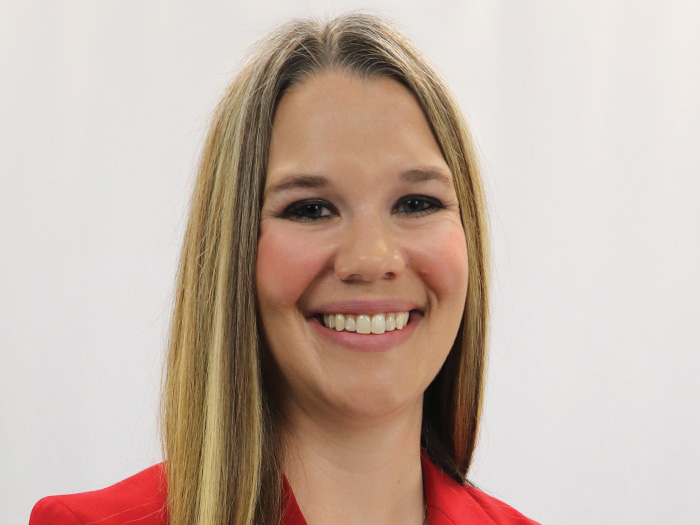Sponsored: Starr Insurance Companies
Employee Lawsuits Are Costly – Win or Lose. These 4 Trends Are Making the Risks More Severe

For many companies these days, the question is not if you will face an employment-related lawsuit, but when?
No matter how much you trust your employees or managers or how thoroughly you focus on training, it is extremely rare for a strategy to be 100 percent effective in avoiding claims of harassment or discrimination.
“The probability that a company will get sued for an alleged employment practices violation has increased dramatically; aggrieved employees drive some litigation, and, in other cases, plaintiffs’ lawyers encourage this type of claim,” said Beth Goldberg, chief underwriting officer, Financial Lines Division, Starr Insurance Companies. “These claims can be expensive just to defend, even if they are groundless.”
According to Westlaw, a legal research service by Thomson Reuters, plaintiffs win 51 percent of the time when employment practices liability (EPL) claims go to trial.
Losses from certain types of EPL lawsuits are also getting larger. Employment law firm Seyfarth Shaw LLP found that settlements for the 10 biggest class actions increased 55 percent from 2016 to 2017.
These damages, of course, don’t reflect the long-term impact to a company’s reputation. For all these reasons, boards are starting to take notice that, in today’s environment, an EPL insurance policy is not just “nice to have,” but an absolute necessity.
Four trends in particular are currently driving greater EPL exposure:
1. It’s not just about lost wages and compensation; juries are increasingly focused on emotional damages.
“The emotional distress and mental anguish components can be larger than the monetary demand for front pay and back pay,” Goldberg said.
Allegations from claimants may range from discomfort and embarrassment to anxiety and depression. They may claim that they’ve lost sleep and their health has deteriorated, due to the trauma of harassment or discrimination. Testimony from family, friends, and treating psychologists or psychiatrists can buttress these claims and win over a jury. It can be difficult to place a monetary value on these damages or argue with a claimant’s demand; determining what’s fair is very subjective.

Beth Goldberg, chief underwriting officer, Financial Lines Division, Starr Insurance Companies
Some federal discrimination statutes place caps on damages that plaintiffs can seek, but they can seek larger amounts by suing under different federal, state, and local laws that have no cap.
In New Jersey, for example, two brothers sued their former employer for racial discrimination, hostile work environment and retaliation under the New Jersey Law Against Discrimination (LAD).
The jury awarded them $2.5 million in damages, including $800,000 in emotional distress damages to one brother, and $600,000 to the other.
2. Social media and movements like #MeToo intensify reputational risk.
The “Me Too” movement has brought national attention to the issue of sexual harassment in and outside of the workplace. And while “Me Too” has provided a platform for victims to speak about their experiences and prompted a re-evaluation of what constitutes appropriate behavior, it has also increased the public profile of claims that may be false.
“Harassment has become a headline risk, one that is magnified by the media and can present an even greater threat to a company’s reputation,” said Lisa Lockhead, vice president, Head of Private & Not For Profit – Financial Lines, Starr Insurance Companies. Thanks to the power of social media, companies may be prosecuted in the court of public opinion, before they have a chance to present an argument or defend themselves. If the story gains enough traction, it could cost an executive his or her job and it can cost the company its consumers’ trust and loyalty.
“This type of reputational damage can happen even if a story is untrue,” Lockhead said. “The suggestion of misconduct may cast a cloud over the company’s brand value, which may translate into falling stock prices and long-term economic impact.”
3. Plaintiffs’ attorneys drive class action disability discrimination cases.

Discriminatory practices that violate the Americans with Disabilities Act may similarly garner large settlements and present reputational risk. Recently, attorneys have sought out such potential problematic practices in places companies often overlook — their company websites.
“There has been a growing trend of plaintiff lawyers going after companies who do not make their websites accessible to the deaf and blind,” Goldberg said. According to research from Seyfarth Shaw LLP, plaintiffs filed 4,965 website accessibility lawsuits in the first half of 2018. At this rate, there will be close to 10,000 such suits by the end of the year – a 30 percent increase over 2017.
“People tend to associate ‘accessibility’ with physical spaces, but essentially every company has a website and this digital space is subject to the same oversight,” Goldberg said.
Physical spaces are still, however, up for grabs. Attorneys in some states are increasingly targeting small retail shops and corner stores that often lack the space to improve accessibility by widening doorways or installing ramps. According to a 2017 report by the New York Post, just five wheelchair-bound New Yorkers are behind almost 400 ADA lawsuits targeting small businesses across the city.
Even when store owners are renters, they can still be held accountable for noncompliance with the ADA. “The plaintiff firms are naming both (renters and owners) to go after the deep pockets,” Lockhead said.
4. Varying state regulations add complexity to compliance.
In addition to federal regulations, companies must also contend with variances in state law.
“In particular, states vary in their protection of rights afforded to the LGBTQ community. Companies should have an understanding that discrimination based on sexual orientation or gender identity, but what are their obligations as far as bathroom access, or using non-gendered pronouns, etc. What rights are protected and to what extent?” Lockhead said.
Discrimination based on physical appearance is also treated differently on a state-by-state basis. California, for example, expressly bars employers from discriminating based on body type, while New York does not.
“State laws go far beyond federal regulations, and understanding the differences is especially important for multi-state employers,” Goldberg said.
It’s More Important Than Ever to Ensure Internal Controls Are in Place
There are several risk control and risk transfer strategies organizations can deploy to mitigate the EPL losses. Some basic controls are critical, like employee handbooks that detail a code of conduct, policies and procedures around hiring and firing, thorough training, and a dedicated leader of human resources.
The ADA published a 27-item checklist to help companies make their websites accessible. Most are easy fixes, such as including text descriptions for links and navigation menus, and HTML alt tags for images for hearing-impaired visitors, or corresponding audio descriptions for the visually-impaired. Sites should also offer a way to contact a web manager with questions or complaints about accessibility.
These adjustments are not resource-intensive, even for smaller companies. But companies also need to do an assessment of their corporate culture.
Part of improving company culture is providing a way for employees to raise concerns without fear of retribution. To that end, “providing a way for employees to report issues internally directly to the board —anonymously if they wish — can help get ahead of potential claims. Change has to come from the top down,” Lockhead said.
To learn more, visit http://www.starrcompanies.com/insurance/financialoverview.
This article was produced by the R&I Brand Studio, a unit of the advertising department of Risk & Insurance, in collaboration with Starr Companies. The editorial staff of Risk & Insurance had no role in its preparation.










